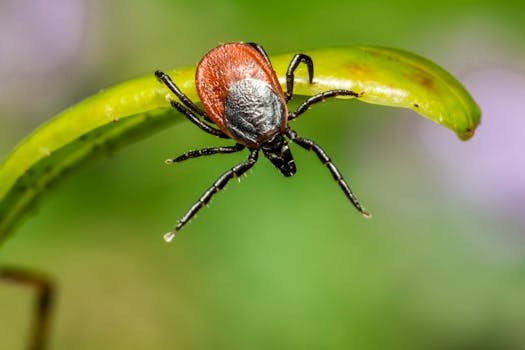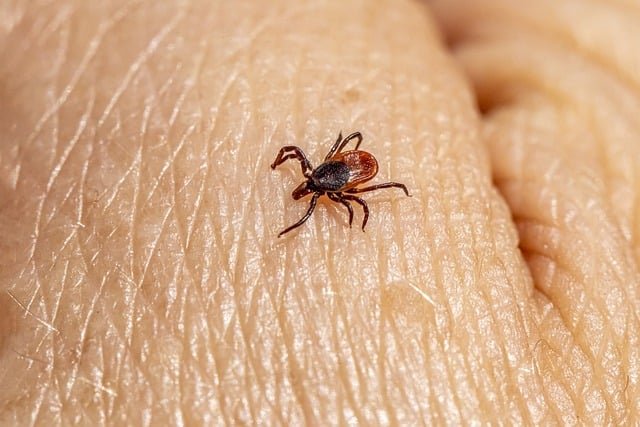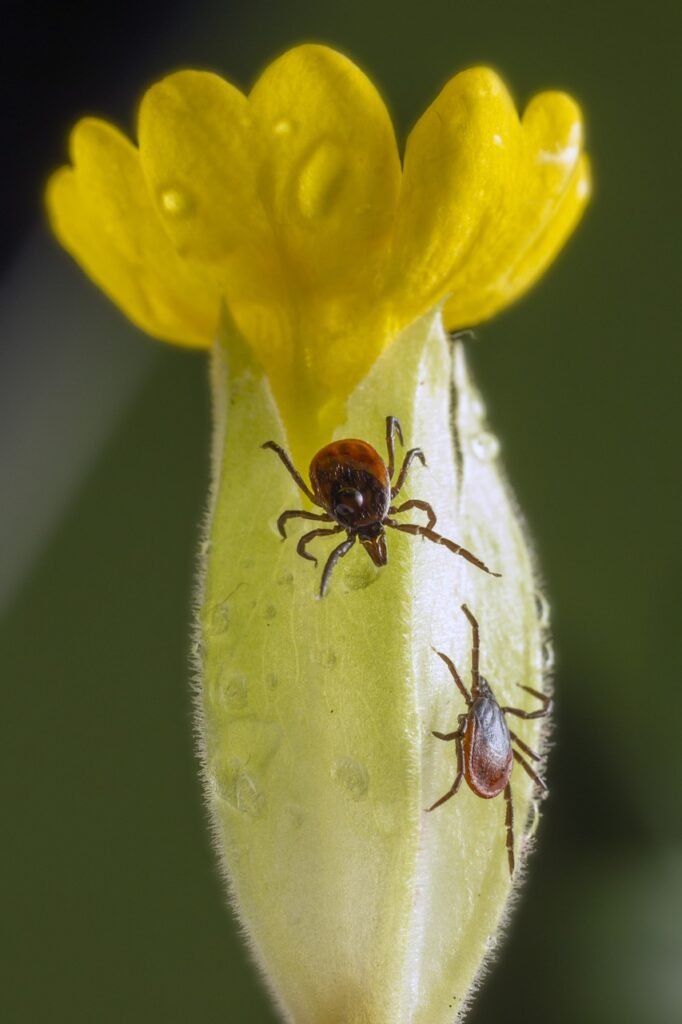A guide to ticks and Fleas
Dogs are curious by nature, often enjoying a good romp in the grass or a nature hike with their owners as, which can cause discomfort. However, these outdoor adventures expose them to common pests like ticks and flefort and even serious health issues. Let’s walk through the best practices to help you protect your furry friend and keep them itch-free. —
Why You Should Be Concerned About Ticks and Fleas
Ticks and fleas are not only irritating; they can also transmit dangerous diseases. Ticks can spread Lyme disease, ehrlichiosis, and anaplasmosis, while fleas are notorious for causing tapeworm infestations, allergic reactions, and anemia in extreme cases. Prevention is the best strategy to ensure your dog stays healthy and happy. —
- Use Preventive Treatments There are various flea and tick preventive treatments available on the market, including: –
Topical Treatments: Applied directly to your dog’s skin, these products often last for about a month and kill both fleas and ticks on contact. –
Oral Medications: Usually available in tablet form, oral medications are another effective method. Some kill both fleas and ticks, while others are targeted at just one of these pests. –
Collars: Flea and tick collars provide long-lasting protection, typically for several months. Make sure the collar fits comfortably but snugly. –
Sprays and Shampoos: These provide short-term protection but are useful in certain situations, like during a heavy flea infestation or tick season.
Note: Always consult your veterinarian to determine which treatment is best suited for your dog’s breed, age, and size. — - Maintain a Clean Environment Keeping your dog’s living area clean is essential. Fleas can lay hundreds of eggs, which can fall off your dog and hatch in your home. –
Vacuum Frequently: Regularly vacuuming carpets, rugs, and furniture helps remove fleas and their eggs. Empty the vacuum bag or canister outside to avoid reinfestation. –
Wash Bedding Weekly: Your dog’s bedding should be washed in hot water at least once a week to kill any lingering fleas or ticks. –
Mow the Lawn and Remove Debris: Ticks thrive in tall grass, brush, and leaf piles. By keeping your yard well-maintained, you reduce the chances of ticks latching onto your dog. — - Regularly Inspect Your Dog After outdoor activities, inspect your dog thoroughly for any signs of ticks or fleas. Ticks can latch onto a dog’s skin and feed for days, so it’s important to spot them early. –
Check Common Tick Areas: Focus on areas such as between the toes, inside the ears, around the eyes, and under the tail. Ticks often hide in hard-to-reach places. –
Use a Flea Comb: Flea combs have fine teeth that help catch and remove fleas and flea dirt. Run it through your dog’s coat, particularly around the neck, back, and base of the tail. — - Practice Safe Tick Removal If you find a tick, it’s crucial to remove it correctly. Improper removal can increase the risk of infection or leave parts of the tick embedded in your dog’s skin. –
Use Tweezers or a Tick Remover Tool: Grasp the tick as close to your dog’s skin as possible and gently pull it out with steady, upward pressure. Avoid twisting, which can break the tick. –
Clean the Area: Once removed, clean the bite area with antiseptic and wash your hands thoroughly. –
Dispose of the Tick Safely: Place it in a sealed container or flush it down the toilet to prevent it from reattaching. — - Monitor for Signs of Flea and Tick-Borne Illnesses Even with preventive care, it’s essential to watch for signs of flea and tick-borne diseases. Some symptoms to watch for include: –
Itching and Redness: Persistent itching, scratching, or redness on your dog’s skin may indicate a flea allergy. –
Lethargy and Fever: If your dog seems more tired than usual or has a mild fever, it might be a sign of tick-borne illnesses like Lyme disease. –
Limping and Swollen Joints: Swelling and pain in the joints can indicate Lyme disease or other tick-related illnesses. If you notice any unusual symptoms, consult your veterinarian as soon as possible.
Key Takeaway Points –
Use Preventive Products: Topical treatments, oral medications, collars, and sprays are all effective preventive options. –
Keep Your Home and Yard Clean: Regularly vacuum, wash bedding, and maintain your yard to reduce fleas and ticks. –
Inspect Your Dog Often: A quick check after walks can prevent ticks and fleas from causing harm. – Practice Safe Tick Removal:
Properly removing ticks reduces the risk of infections and secondary illnesses. –
Watch for Symptoms:
Any changes in behavior, appetite, or energy may signal a tick- or flea-borne illness. — Protecting your dog from fleas and ticks doesn’t have to be a daunting task. With regular care, preventive products, and a clean environment, you can help your dog enjoy the great outdoors safely.
Remember, a little vigilance goes a long way in keeping your furry friend happy, healthy, and pest-free.
Here are some natural remedies that may help repel fleas and ticks from your dog, but it’s important to note that these are not foolproof and may not be effective for everyone. It’s always best to consult your veterinarian for the most effective and safe flea and tick prevention methods for your specific dog.
- Essential Oils: Some essential oils, such as lavender, lemongrass, peppermint, cedarwood, and rosemary, have natural insect-repelling properties. You can dilute a few drops of these oils in a carrier oil, like coconut oil, and apply it to your dog’s coat, avoiding their face and sensitive areas. However, it’s crucial to use essential oils cautiously and consult your veterinarian for safe usage and dilution ratios, as some essential oils can be toxic to dogs if used improperly.
- Apple Cider Vinegar: Apple cider vinegar has natural acidic properties that may deter fleas and ticks. You can add a small amount of apple cider vinegar to your dog’s drinking water or dilute it with water and apply it to their coat. However, be cautious not to use too much apple cider vinegar, as it can upset your dog’s stomach.
- Garlic: Garlic is said to have flea-repelling properties when consumed by dogs. However, it’s essential to give garlic to dogs in moderation and under veterinary guidance, as excessive garlic consumption can be toxic to dogs.
- Diatomaceous Earth: Food-grade diatomaceous earth is a natural powder that can dehydrate and kill fleas and ticks. You can sprinkle it on your dog’s coat and bedding, but be sure to use food-grade diatomaceous earth, as other types can be harmful to your dog.
- Regular Grooming: Brushing your dog regularly can help remove fleas and ticks before they can lay eggs. You can also use a flea comb to remove any fleas or ticks you find.
- Keep Your Home Clean: Vacuum your home regularly, including carpets, furniture, and bedding, to remove any fleas or eggs that may be hiding. You can also wash your dog’s bedding in hot water to kill any fleas or eggs.
Remember, these home remedies may not be as effective as commercial flea and tick prevention products, and they may not be suitable for all dogs. Always consult your veterinarian for advice on the best flea and tick prevention methods for your specific dog.





